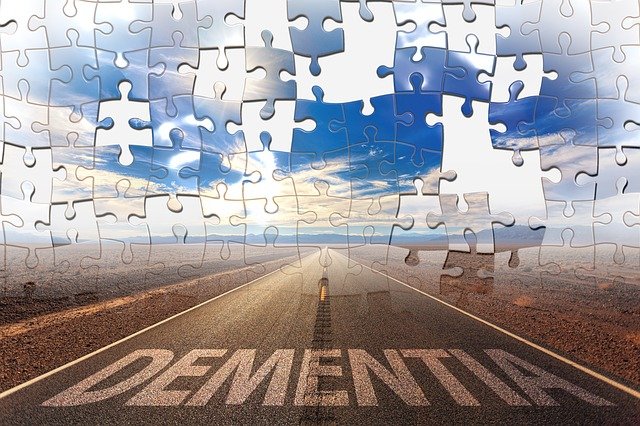Dr. Dale Bredesen, author of The End of Alzheimer’s, in an interview podcast with Kirkland Newman, indicated that he was the theoretician oversighting the work of his team engaged in clinical trials to prevent and reverse Alzheimer’s. He also introduced Dr. Kat Toups as the practitioner and Principal Researcher for the clinical trials. Kat specialises in functional medicine psychiatry and in 2009 was awarded the honour of Distinguished Fellow of the American Psychological Association (APA), the highest honour bestowed by the APA. After researching Alzheimer’s for 20 years and working with Dementia patients in her clinic, she found in 2010 that she herself was a Dementia sufferer. She spent the next three years researching and treating herself to the point where she was able to return to her practice after a period of incapacitation.
Kat was 50 years old at the time of her self-diagnosis of Dementia and she was acutely aware that such early onset Alzheimer’s tends to develop more rapidly than for people who are 65 years or older. Kat described development of her symptoms as a progressive deterioration of her cognitive abilities:
- Commencing with her inability to remember two sets of three words that she had used for 20 years in undertaking memory tests with her patients (she had to write them down to access them)
- She found she was unable to reverse park or parallel park her car because these involved fairly complex cognitive steps
- Her memory of how to work on her computer declined – she could not remember how to operate this primary research tool and its particular functions; she found that her husband would get annoyed at her because she could not remember his instructions or that he had actually reminded her of the processes involved
- Kat found she had difficulty remember phone numbers, and even worse, needed multiple attempts to dial a phone number
- She found during a conversation at a friend’s place that she lost track of the conversation and was unable to understand what was being said in normal conversation (her cognitive ability had declined to the point where she had developed auditory processing problems)
- She continued to deteriorate and eventually she suffered extreme fatigue, had difficulty getting out of a chair (for a year) and could not work.
Kat was very conscious of her concurrent problems including an auto-immune disease, Lyme disease, chemical sensitivity, allergy to multiple things resulting in hives and rashes all over her body and brain fog (resulting from exposure to chemicals in stores). Because of her awareness of the many factors impacting cognitive ability – such as toxins, nutrient deficiency, lack of hormones, lifestyle challenges and stresses, inflammation and infections, and diet – she was motivated to undertake a battery of tests to determine and treat the specific factors impacting her cognitive health. She indicated that in her clinical trials she does the same thing – isolate personal factors that can then become “treatment targets” for reversing the impact of Dementia (including Alzheimer’s).
Kat was eventually able to return to work and resume her clinical practice with the added benefit, because of her personal experience, of being able to treat her patients faster than she had treated herself. She explains the thoroughness of her self-testing and treatment in her podcast interview with Kylene Terhune, Functional Diagnostic Nutrition (FDN) practitioner.
In her interview with Kirkland mentioned previously, Kat discussed a case study that demonstrated reversal of Dementia. She spoke about a patient who had been tested elsewhere at the age of 60 and found to have a delayed memory score of 19, a score that should have been “way over 50”, given his education and obvious intelligence. When he presented for a Dementia trial with Kat at age 63 (after doing nothing in the intervening period on the basis of the medical advice he had received), his cognitive test result was 7 (a decline of more than 50%). Kat stated that she and her team were able to reverse this result after the patient spent 9 months in the clinical trial – resulting in a score of 92 at the end of that time.
Ways to prevent and reverse Alzheimer’s and other forms of Dementia
Kat provides a free e-book, Decoding Dementia, in which she explains the causes of decline in memory and cognitive ability, discusses different treatment options, proposes diet and lifestyle changes and ways to test for and identify underlying causes of Dementia, including toxins (especially mould), inflammation, lack of hormones, and stress.
Kat provides what she terms a Basic Dementia Protocol which includes:
- Identifying and correcting any underlying causes likely to contribute to cognitive problems
- Observing her guidelines on exercise, diet and sleep
- Brain training e.g. Brain-HQ
- Correcting vision and hearing through testing and taking remedial action
- Overcoming deficiencies in nutrients (e.g. Vitamin D)
- Reducing stress by using mindfulness practices
- Restoring hormones to the right levels and balance.
Kat is particularly conscious of the need to remove mould from homes and correct sleep apnea:
- Mould – Kat explains that certain types of mould “can result in inflammation and destruction of the neurons” if left unattended over a reasonable period. She advocates strongly for mold testing using home kits and external professional assessment. Kat provides detailed instructions on how to go about dust collection and assessment (pgs. 10-11 of Decoding Dementia).
- Sleep Apnea – Kat encourages testing and correcting Sleep Apnea where frequent snoring occurs as this condition causes a continuous loss of oxygen to both the brain and the heart. In her words, if left untreated, “Sleep Apnea can lead to both Dementia and Congenital Heart Disease”.
In her free e-book, Decoding Dementia, Kat offers more details in relation to each of the elements of her Basic Dementia Protocol. On mindfulness, she states that any mindfulness practice will be beneficial provided it is done on a daily basis and, ideally, for at least 20 minutes. Kat recommends using a mindfulness practice that suits you personally and your commitments. She encourages the use of guided meditations such as those provided by the Mindful Awareness Research Centre (MARC), UCLA. Other options Kat proposes include Tai Chi, Gratitude practices including journalling, Meditation apps such as HeadSpace, and HeartMath Technology (focused on inner balance and stress reduction).
Reflection
We can each think of someone who could make use of the information and options provide by Kat. The challenge is to apply her experience and research insights to ourself and undertake the testing, lifestyle changes and treatments (where necessary) that she proposes. I find that guided mediations, mantra meditations and Tai Chi (meditation-in-action) are my favourite mindfulness practices. Through these practices, I hope to grow in mindfulness so that I can increase my self-awareness, develop and support my brain (through improved attention and concentration) and build better understanding and compassion. I hope to cultivate and savour my subconscious and gain greater access to my innate creativity.
__________________________________
Image by Gerd Altmann from Pixabay
By Ron Passfield – Copyright (Creative Commons license, Attribution–Non Commercial–No Derivatives)
Disclosure: If you purchase a product through this site, I may earn a commission which will help to pay for the site, the associated Meetup group, and the resources to support the blog.
Note: The Content of this post is not intended to be a substitute for professional medical advice, diagnosis, or treatment. Always seek the advice of your physician or other qualified health provider with any questions you may have regarding a medical condition.


